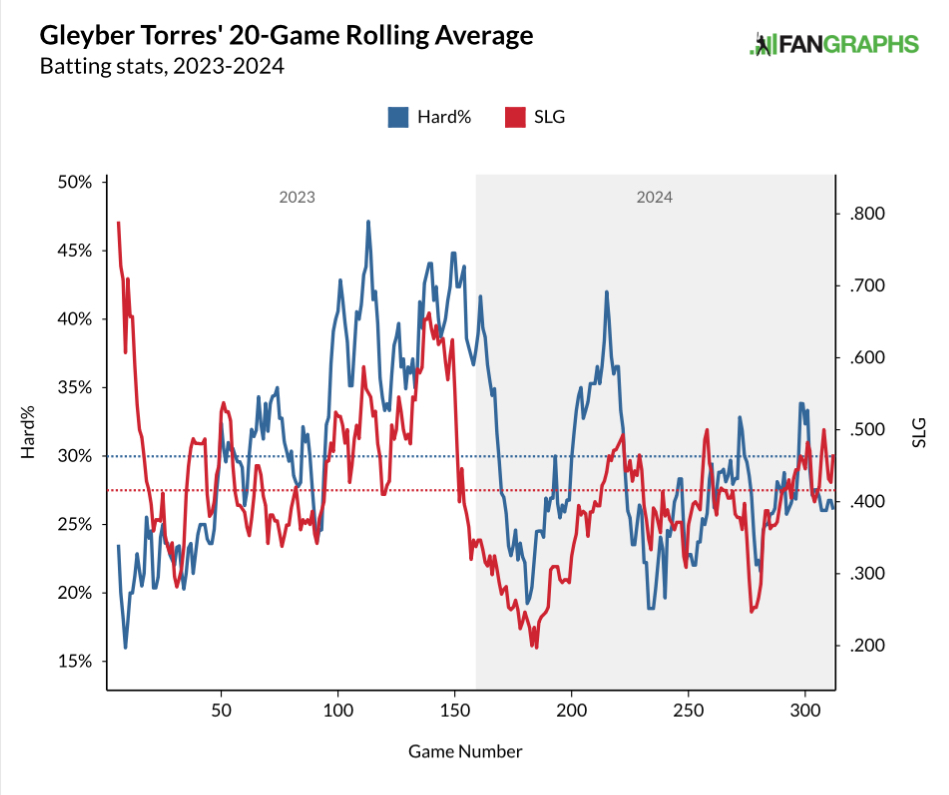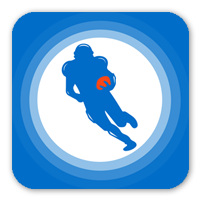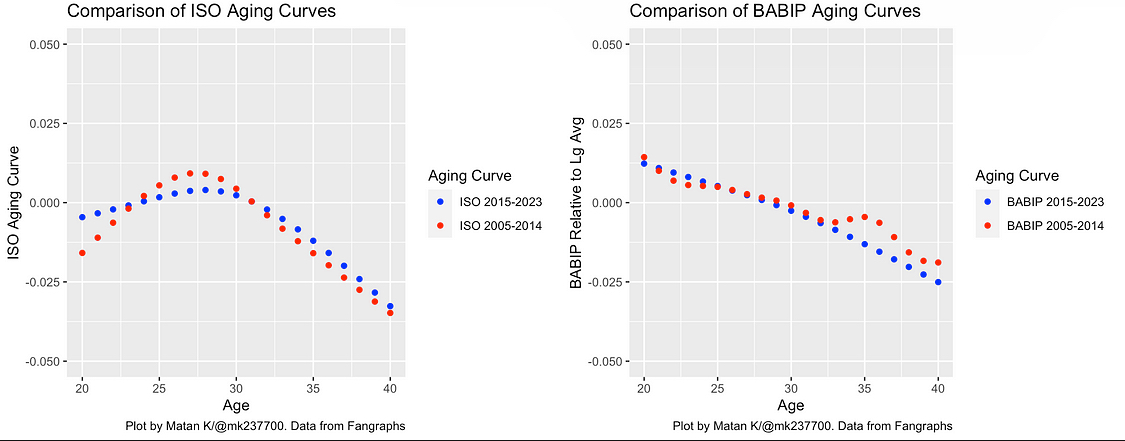Michael's potential fantasy baseball second base busts and overvalued ADPs for 2025. You may want to avoid drafting these hitters in fantasy baseball drafts.
As MLB teams ramp up through spring training, fantasy baseball players are likewise getting their research reps in and gearing up for the best part of this game we play: fantasy baseball draft season.
Some of us have been drafting for weeks if not months, and one of the clearest trends we’ve discovered is the weakness at second base in 2025. There’s some interesting depth for those doing draft and hold-style leagues, but fantasy managers will want to have a plan when approaching the position.
To that end, we’ve identified three second basemen that are being overdrafted and should be avoided at cost. The average draft position (ADP) here is taken from the last two weeks of 12-team drafts at the NFBC.
Be sure to check all of our fantasy baseball lineup tools and resources:- Fantasy baseball trade analyzer
- BvP matchups data (Batter vs. Pitcher)
- PvB matchups data (Pitcher vs. Batter)
- Who should I start? Fantasy baseball comparisons
- Daily MLB starting lineups
- Fantasy baseball closer depth charts
- Fantasy Baseball live scoreboard
- Fantasy baseball injury reports
Marcus Semien, Texas Rangers
ADP: 85
For years, we knew what to expect from Marcus Semien: elite durability, run-producing accumulation, and impactful home run and stolen base numbers, all at a relatively weak position. He is the only current player to make at least 700 plate appearances in four straight seasons, and in fact, Semien has exceeded that threshold in six straight full seasons going back to 2018.
However, we saw a dip in production last year. After going 25/14 or better every season since 2021, he managed just 23 homers and eight steals at age 33. Semien has never crushed the ball, but his average exit velocity dropped (88.4 to 87.4 mph) while he batted just .237. In fact, Semien hits a lot of fly balls and as a result, his BABIP has fluctuated, leading to alternating good and poor batting averages. Since 2020 he’s hit .237, .276, .248, .265, and .223. So every other season all those at-bats are actually a significant drag on our batting averages.
Semien is now 34 years old so we also have to start worrying about aging curves. Time’s effects only move one way for all of us, even athletes. Here is a chart from FanGraphs showing the general trends in batting average on balls in play (BABIP) and isolated slugging (ISO) as hitters age (the blue lines denote the most recent seasons; red indicates years with potential steroids influence).
Even the greats succumb to these trends eventually. Perhaps Semien won’t fall off completely but there’s cause to worry given his age and coming off the worst full-season OPS of his career (.699). The team may also be trying to compensate for this reality, as both manager Bruce Bochy and team president Chris Young have mentioned over the winter that they would like to get Semien more rest in 2025. His accumulation powers will be muted if he only reaches 600 or even 650 PAs.
Semien remained pretty fast, with 81st percentile sprint speed last year. However, his stolen bases and steal attempts have declined every year since Bochy arrived, from 25 to 14 to eight steals last season. As Rangers skipper, Bochy has had the entire team attempt steals 30-50 percent less than the league average, per Baseball Reference. Put that together with a potentially harmful batting average, and Semien is suddenly at risk of being a positive in only three categories, not five.
Given that he is entering his age-34 season, it becomes more difficult to imagine Semien—who has never struck the ball hard—continuing to beat Father Time. The price is lower this year, but we are more intrigued by up-and-comers at second base like Jordan Westburg and Matt McLain in a similar ADP range.
Brandon Lowe, Tampa Bay Rays
ADP: 210
Brandon Lowe is among the best bets for power at second base. Since 2021 he is third in home runs at the position (89) and first in isolated slugging (.231), assuming a minimum of 200 PA. But in recent seasons he has also missed significant time, ranking 28th in plate appearances since 2022. He hasn’t exceeded 109 games played in any season in that time and his 149 GP in 2021 is a clear and now distant outlier. Lowe has been on the injured list eight times in the past three seasons, including multiple times for a chronic back issue. Additionally, the Rays have regularly platooned him. Last year Lowe only started 39 percent of the time against fellow lefties.
As a result, Lowe’s counting stats have been lower than you might expect (no pun intended), with fewer than 60 runs and 70 RBI each of the last three seasons. He is not a total zero for stolen bases but his career high is seven. As a fantasy second baseman or middle infielder that puts pressure on the rest of our team builds.
Finally, Lowe’s batting average will almost certainly be a drag on our teams. Since 2021 he’s hit .247, .221, .231, and .244—and ATC projects a .236 batting average for him in 2025. He’s likely a one-category standout, and even the homers will fall short if his injury risk comes to pass in a worst-case scenario. Given these concerns, it makes little sense to take Lowe over the likes of Jonathan India or Colt Keith, both of whom offer more balanced production and are being drafted two to three rounds later in 12-teamers at the NFBC.
Gleyber Torres, New York Yankees
ADP: 230
Gleyber Torres signed a one-year deal with Detroit this offseason, saying he wanted to “bet on himself.” However, going to play home games at Comerica Park doesn’t seem optimal to rebuild one’s value.
After two seasons going at least 24/10 with solid batting averages, Torres was a popular pick in drafts last offseason. It did not pay off, as he hit .257 with just 15 homers, four steals, and 143 runs plus RBI despite playing 154 games. Now, it is true that Torres was hit on the thumb by a pitch on March 29, which likely contributed to his .226 average and 92 OPS+ in the first half. He also had a groin injury in late June, which may explain his decline in speed (29th percentile) and stolen base attempts—except his sprint speed was just as bad in 2023 and he only stole four bases in the first half even before the groin issue.
Moreover, Torres’ second-half turnaround was less than inspiring: while he hit .290, the power never came back with seven homers and the same 8 percent HR/FB rate he had in the first half. That rate was 13 percent in both 2023 and 2022. We can see a clear downward correlation between Torres’ hard-hit rate and his power.

Betting on a Torres bounce-back requires a belief that injury alone wiped him out last year. But his sprint speed is on a three-year decline, and his defense has also trended down; there’s a real loss of athleticism here. In addition, his new manager AJ Hinch has had the Tigers attempt steals well below league-average rates, per Baseball Reference.
Perhaps some of Torres’ power comes back with an offseason to further heal the thumb, but he’s also experiencing one of the most extreme negative park shifts imaginable: per Statcast, Yankee Stadium is the second-best park for right-handed homers (120 park factor) while Comerica ranks 24th (88)—a 32 percent drop.
Torres is still a viable asset for points leagues and on-base percentage formats (.330 OBP last year), and he should bat near the top of the Tigers lineup. But even with some improvement, this is a pretty blah profile for roto leagues outside the deepest of formats. ATC projects him for 16 homers, seven steals, and a .256 average. At this point in drafts, we would rather shoot for more upside.
Download Our Free News & Alerts Mobile App
Like what you see? Download our updated fantasy baseball app for iPhone and Android with 24x7 player news, injury alerts, sleepers, prospects & more. All free!

More Fantasy Baseball Advice





 RADIO
RADIO

























